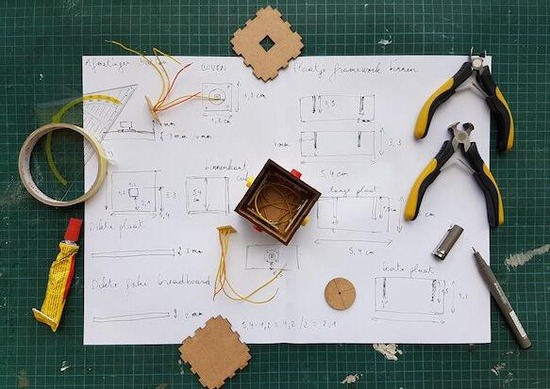How Project Planning Can Enhance Your Next Floor Installation Project
Whether you’re a flooring contractor or a homeowner looking to install new floors in your home, there’s something you have to have before you get started.
That something is not some super secret installation technique that’ll help you lay down flooring in half the time.
No, the success of your next flooring project is largely dependent on one thing—having a plan.
After all, the first step to doing something right is knowing what you’re doing and what it takes to accomplish it!
We’ll show you how project planning can be a serious game-changer in your next floor installation project.
We’ll also let you in on some tips and resources to enhance your project-planning process.
We’ll explain:
- What project plans are (and when you should make them)
- Why it’s important to plan ahead of time
- Basic flooring project planning tips
- Basic flooring project planning resources
Let’s hop to it!
Project Planning Resources:
Installation advice:
Design ideas:
Repair and maintenance:
What are project plans? (And when should you make them?)
 Project plans are exactly what they sound like—they’re plans you make to start a new project.
Project plans are exactly what they sound like—they’re plans you make to start a new project.
And in this case, we’re talking about making a plan for your next flooring project.
Project planning is important because it helps you figure out:
- What you’re doing
- What you need
- How you’re going to do it
There are no exact rules to creating a project plan! That being said, how you go about planning and how many details you include are entirely up to you.
The only thing we strongly recommend is creating your project plans before you actually start working on your project.
In the case of a floor installation project, that means you should have your tools, materials, and design prepared before you even think about laying down your first board.
It’s important you create a plan first because the plan will help you better prepare for your project.
As a matter of fact, having a plan is a crucial part of the floor installation process as it can mean the difference between a failed project and a successful one.
Why it’s important to plan ahead of time
 It’s important to plan projects out beforehand to ensure your project construction goes smoothly.
It’s important to plan projects out beforehand to ensure your project construction goes smoothly.
This is especially important when you’ve got a big project in mind. It’s a lot more efficient to make a plan when you’re dealing with a project as big as installing flooring in your entire kitchen, or when you’re dealing with materials as pricey as hardwood floors.
In this way, making a plan can:
- Help you figure out what you want your floor to look like: Understanding what kind of design you’re going for and how to create it can help you complete the project faster. This way you don’t have to worry about figuring out the design as you go along or risk wasting materials or time on a design you don’t like.
- Help you understand what tools and materials you need to get the job done: If you plan ahead, you won’t have to worry about buying materials you don’t end up using. You’ll know exactly what to get the first time you go to the store.
- Help you build a better floor: Having a better understanding of what you’re building can help you make a better project. Because you’ve planned it out and thought it through, you’ll be aware of what you need to do to create a strong, long-lasting floor
Overall, creating and following a plan can help you:
- Complete a project faster
- Reduce the number of mistakes you make in the process
- Reduce the number of materials you waste in completing the project
- Help you build something more efficiently, leading you to achieve quality results
By the time you finish your project, you’ll understand that making a plan is one of the most important parts of an installation.
But then again, maybe you haven’t made a plan before because you don’t know how.
Don’t worry!
We’ve got some planning tips to help you get started.
Flooring project planning tips
 Planning requires you to sit down and think about what you’re doing and how you’re going to do it.
Planning requires you to sit down and think about what you’re doing and how you’re going to do it.
To make a flooring project plan, you have to:
- Choose a flooring option:
- Take measurements to determine the amount of square footage you’ll need to cover. Then decide what kind of wood floors you want to lay down.
- Think about the material itself. Ask yourself what color and pattern you’d like to see on your floorboards. Decide whether you want to use solid hardwood flooring, vinyl flooring, laminate flooring, or engineered hardwood flooring.
- If you’re looking for wood flooring ideas, check out interior design magazines or Pinterest. If you’d like an idea of what a particular flooring would look like in your room, get a swatch of that same floor.
- You’ll also want to decide if you need a baseboard underlayment, or a layer between your subfloor and your floor. This is especially helpful when you install hardwood as it can prevent warping in solid wood and preserve the strength of your floor adhesive.
- This stage is also a good time to begin thinking about your budget. Decide how much money you’re willing to spend and ensure that all of your materials and tools fit within this budget.
- Know what you need to buy: Once you know what flooring you want, you can start making a list of all the tools and materials you’ll need to install it. If you’ve tackled this kind of project before, you’ll likely have most of the tools already, but making a list ensures that you don’t forget anything.
For most flooring projects, you’re going to need:
-
- Wooden planks: To form your floor
- A moisture meter: To ensure that the wood planks are at a moisture content that works with the equilibrium moisture content of the installation location.
- A pencil or chalk: To make a chalk line or mark any cuts or measurements you make on the planks
- A nail gun (or a hammer with nails): To connect the wooden board to the floor
- A drill with various drill bits: To make pilot holes to mark where screws should go and tighten screws into the planks
- A prybar: To remove or lift wood planks
- A mallet and a tapping block: To gently hammer floorboards into place without damaging them
- A jigsaw: To cut and trim your wood to ensure it’s the right shape to fit against other planks
- Spacers: To create expansion gaps between the floor and the wall, so your planks can shift without damaging the integrity of the wood
- Stain and finishing: To seal and color your wooden planks (in case they haven’t been stained and finished already).
- Decide how you want to install your boards: In addition to there being a ton of flooring options, there are also tons of installation methods you can choose from. You can install tongue-and-groove flooring—an installation method known as “floating floor” that negates the need to nail or glue floorboards in place. This floating floor is all attached, while plank flooring requires you to install its separate floorboards, one floorboard at a time. Other installation techniques you might want to look into are countersink and face-nail.
- Prep your work area: Before you begin your home renovation, start preparing the room for your new hardwood floors. Remove old furniture and appliances, and then, move on to removing the existing flooring of that room. Once you remove the old boards, take a look at the subfloor. The type of subfloor you have will determine what kind of fastening method you’ll need to use. For example, if you’ve got a concrete subfloor, you’ll need to glue down your boards.1 But if you’ve found a softer material like plywood, you can nail down your wood.2
- Prep your wood: When you first select your wood, you’re going to want to use a moisture meter to test whether the boards have acclimated or not. You want to select the acclimated boards because they’re less likely to warp or mold than non-acclimated wood. If you’re using worn-out floorboards, start cleaning, sanding, and staining them. If they have a lot of cracks or holes, go ahead and fill those in with wood putty.
- Remember safety considerations: Make sure your workspace is clean and organized. Lay out all your tools and materials so they’re easy to reach while you’re working on your project. Be sure to prepare for your project by taking safety precautions. This includes removing hazardous items from your workspace and wearing protective gear like safety goggles, gloves, and closed-toe shoes. You’re also going to want to wear some kneepads to protect your knees as you’ll be kneeling on the ground for most of the floor installation process.
Once you do these things you’ll have a solid game plan for starting your project.
But what if you’ve never installed a floor before? And what if you don’t know what type of wood floor you should use?
We can answer these questions by taking a look at project planning resources.
Project Planning Resources
 A hardwood floor installation project might seem daunting for the beginner, but it doesn’t have to be.
A hardwood floor installation project might seem daunting for the beginner, but it doesn’t have to be.
There are plenty of wood flooring professionals out there sharing tips, tricks, and project plans for the general public to use.
Even installation professionals could benefit from some of the information these DIYers provide.
But even if you are just starting, resources like theirs can help you start your project off on the right foot.
Here’s a list of resources you might find helpful:
- Installation advice:
- Design ideas:
- Repair and maintenance::
These resources have the information you need to get started.
But before you begin, you should know that project planning is an essential part of every practice within the construction industry—even woodworking.
Want to understand how you can make your own woodworking project plan?
Come find out at “Plan Your Woodworking Project 101.” Or go to our store to stock up on some of the tools you’ll need to tackle your next flooring project.
- Fogle, Sarah, “DIY Wood Floors for Beginners & Beyond” (↑)
- Ibid. (↑)
